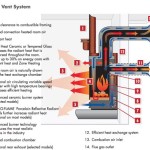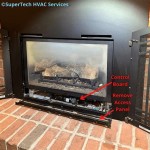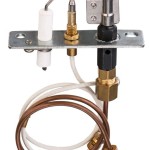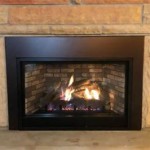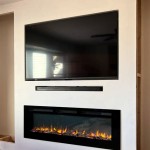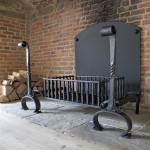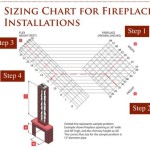```html
Installing a Ventless Gas Fireplace: A Comprehensive Guide
Ventless, or vent-free, gas fireplaces offer a convenient and aesthetically pleasing heating solution for many homes. Unlike traditional gas fireplaces, ventless models do not require a chimney or external venting system, making them easier and potentially less expensive to install. However, the installation process requires careful planning, adherence to safety regulations, and a thorough understanding of the appliance's operational requirements. This article provides a comprehensive guide to installing a ventless gas fireplace, covering essential considerations, preparation steps, and the installation procedure itself.
Before embarking on the installation, it is crucial to understand the principles behind ventless gas fireplace operation. These appliances burn gas very efficiently, minimizing the production of harmful byproducts like carbon monoxide. They are equipped with oxygen depletion sensors (ODS) that automatically shut off the gas supply if the oxygen level in the room drops below a safe threshold. This safety feature is paramount and must function correctly for the fireplace to operate safely. Regular inspection and maintenance are vital to ensure its continued effectiveness. Improper installation or neglect of maintenance can compromise the ODS system, posing a significant safety risk.
Regulations surrounding ventless gas fireplaces vary significantly depending on local building codes and jurisdictions. Prior to purchasing or installing a ventless fireplace, it is imperative to consult with local authorities, building inspectors, and gas suppliers to ascertain the specific requirements and restrictions in the intended installation area. Some jurisdictions may restrict the use of ventless fireplaces altogether, while others may impose limitations on BTU output, room size requirements, or specific installation guidelines. Failure to comply with local regulations can result in fines, mandatory removal of the fireplace, or legal liabilities.
Key Point 1: Pre-Installation Assessment and Planning
The first step in installing a ventless gas fireplace is a thorough assessment of the installation site and careful planning. This involves several critical considerations:
Room Size and Ventilation: Ventless gas fireplaces require a minimum room size to ensure adequate ventilation and prevent oxygen depletion. The appliance's BTU rating determines the minimum room size. The manufacturer's instructions will specify the required cubic footage. It is crucial to accurately measure the room's dimensions and calculate its volume to ensure it meets the minimum requirements. Additionally, the room should have adequate natural ventilation, typically achieved through cracks around doors and windows. Avoid installing a ventless gas fireplace in tightly sealed rooms with poor ventilation.
Gas Line Accessibility: The installation site must have readily accessible gas line. If a gas line is not already present, it will need to be installed by a qualified gas fitter. The gas line must be properly sized to provide adequate gas pressure to the fireplace. The gas line should have a shut-off valve located near the fireplace for safety and maintenance purposes. Ensure the existing gas line is compatible with the type of gas used by the fireplace (natural gas or propane). Using the wrong type of gas can damage the appliance and create a hazardous situation.
Clearances to Combustibles: Ventless gas fireplaces generate heat, and it is essential to maintain adequate clearances between the fireplace and combustible materials such as wood, fabric, and paper. The manufacturer's instructions will specify the minimum clearance requirements for the top, sides, and front of the fireplace. These clearances must be strictly adhered to. Failure to maintain adequate clearances can lead to overheating, fire hazards, and damage to surrounding materials.
Floor Protection: The floor beneath the fireplace must be non-combustible. If the existing floor is combustible, such as wood or carpet, a non-combustible hearth pad must be installed beneath the fireplace. The hearth pad should extend beyond the fireplace's footprint by the distance specified in the manufacturer's instructions. This provides a protective barrier and prevents the floor from overheating.
Electrical Requirements: Some ventless gas fireplaces require an electrical connection for features such as blowers, remote controls, or electronic ignition. Ensure that a suitable electrical outlet is located near the installation site. If an outlet is not available, a qualified electrician should install one. The electrical circuit must be properly grounded and protected by a circuit breaker.
Key Point 2: Installation Procedure
Following careful planning and preparation, the installation process can proceed. It is strongly recommended that a qualified gas fitter perform the gas line connection and initial testing of the appliance. This helps ensure safety and compliance with local regulations. The following steps outline the general installation procedure:
Unpacking and Inspection: Carefully unpack the ventless gas fireplace and inspect it for any signs of damage. Compare the contents of the package with the manufacturer's parts list to ensure that all components are present. If any parts are missing or damaged, contact the retailer or manufacturer for replacements before proceeding with the installation.
Installing the Fireplace Housing: Assemble the fireplace housing according to the manufacturer's instructions. The housing typically consists of a metal frame that supports the fireplace components. Secure the housing to the wall or floor using appropriate fasteners, ensuring that it is level and stable. Refer to the manufacturer's instructions for specific mounting requirements.
Connecting the Gas Line: Have a qualified gas fitter connect the gas line to the fireplace's gas valve. The gas line connection must be made using approved fittings and sealant. Ensure that all connections are tight and leak-free. After connecting the gas line, the gas fitter should perform a leak test using a gas leak detector. Any leaks must be repaired immediately.
Installing the Burner Assembly: Carefully install the burner assembly into the fireplace housing. The burner assembly typically consists of the burner, pilot light, and ODS sensor. Ensure that all components are properly aligned and securely fastened. Refer to the manufacturer's instructions for specific installation details.
Installing the Decorative Components: Install the decorative components, such as logs, rocks, or glass beads, according to the manufacturer's instructions. These components enhance the aesthetic appeal of the fireplace. Place the components in the burner area, taking care not to obstruct the burner or ODS sensor.
Connecting the Electrical Components: If the fireplace requires an electrical connection, plug it into the electrical outlet. Ensure that the electrical cord is not placed in a location where it could be damaged or create a tripping hazard.
Key Point 3: Testing and Safety Checks
After completing the installation, thorough testing and safety checks are essential to ensure the fireplace operates safely and efficiently.
Pilot Light Ignition: Follow the manufacturer's instructions for lighting the pilot light. If the pilot light does not light or goes out repeatedly, consult the troubleshooting section of the manufacturer's manual or contact a qualified technician. The pilot light should burn with a steady blue flame.
Burner Operation: Once the pilot light is lit, turn on the main burner and observe the flame. The flame should burn with a steady blue flame and should not produce excessive soot or carbon monoxide. If the flame is yellow, orange, or smoky, there may be a problem with the gas supply or burner assembly. Consult a qualified technician for assistance.
ODS Sensor Functionality: Test the ODS sensor by partially blocking the air supply to the pilot light. The pilot light should extinguish within a few seconds. If the pilot light does not extinguish, the ODS sensor is not functioning correctly and must be replaced. Do not operate the fireplace if the ODS sensor is not functioning correctly.
Carbon Monoxide Detection: Install a carbon monoxide detector near the fireplace to monitor carbon monoxide levels in the room. Test the carbon monoxide detector regularly to ensure that it is functioning correctly. If the carbon monoxide detector alarms, immediately evacuate the room and contact emergency services.
Ventilation Verification: After the fireplace has been operating for a period, monitor the room for signs of oxygen depletion, such as drowsiness, headache, or dizziness. If these symptoms occur, increase ventilation in the room by opening a window or door. If the symptoms persist, discontinue use of the fireplace and consult a qualified technician.
Final Inspection: A qualified technician should perform a final inspection of the installation to ensure that all components are properly installed and functioning correctly. The technician should also verify that the fireplace meets all applicable safety regulations.
Following these guidelines and prioritizing safety during the installation process will help ensure the safe and efficient operation of a ventless gas fireplace. Always consult with qualified professionals when in doubt and adhere to all local regulations and manufacturer's instructions.
```
Are Vent Free Gas Fireplaces Safe Ventless

How To Select And Install A Gas Fireplace Log Set Fireplaces Direct Learning Center

Considering A Ventless Gas Fireplace Here S What You Need To Know Bob Vila

Vented Vs Ventless Gas Fireplace Logs

What Is A Ventless Gas Fireplace Experts In Gaithersbutg Md

What Is A Ventless Fireplace Home Matters Ahs

If You Have A Gas Fireplace It May Or Not Chimney Flue

How To Install A Ventless Natural Gas Fireplace
.aspx?strip=all)
Ventless Fireplaces Explained Safety Of Vent Free Fires

How To Install A Ventless Natural Gas Fireplace

